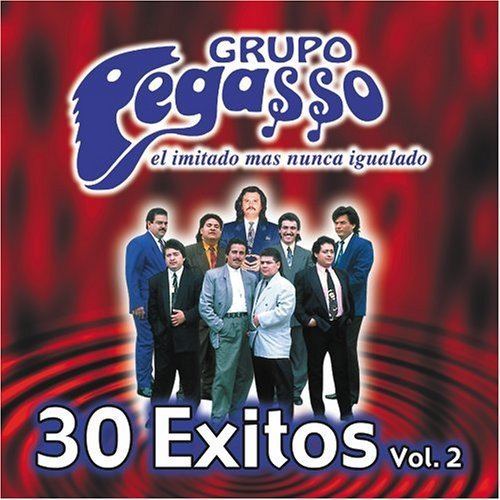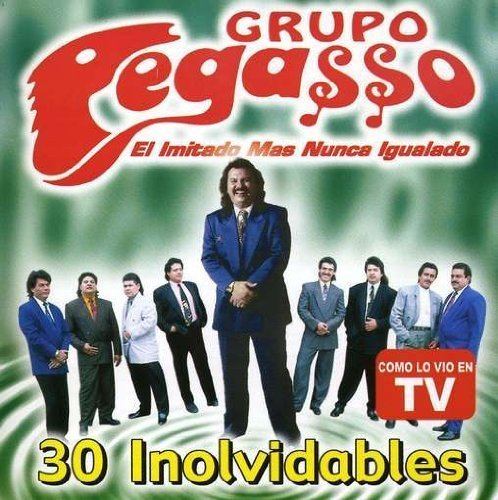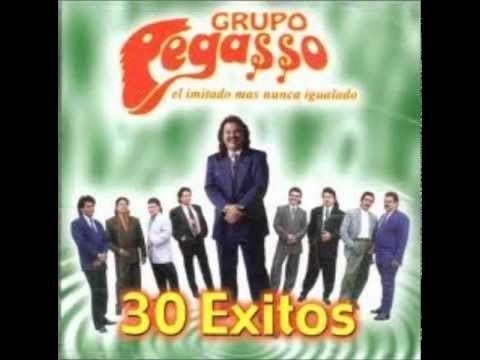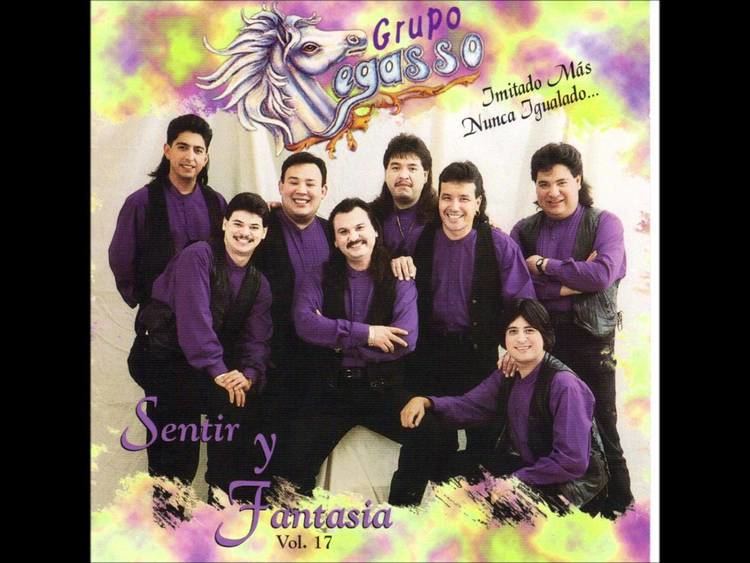Active from 1979 | Genre Cumbia | |
Albums Del Pollo Estevan, Lo Romantico De, El Pollo No Falla Record labels Disa Records, Frontera Music Similar El Pega Pega, Grupo Toppaz, Zaaz, Tropical Panamá, Toppaz | ||
1979–present
Contents
Grupo Pegasso is a Cumbia band from Mexico credited with the creation of the Cumbia pegassera style.
History

Pegasso was formed by Chano Benavides (Main Vocal Singer and director of the group), Jose Santos(Bass), Emilio Reyna (vocals), Mario Garza (Keyboards), and Victor Camacho (Drums). The group recorded their first album in 1979 and released it in 1980, but the work received little recognition. Pegasso's second album, Se Tambalea ("It Stumbles"), vocalist Emilio Reyna, was released in 1982 in Mexico and the United States. This album did received recognition due to its distinctive style playing the organ and guitar.

Pegasso's third album, El No Te Quiere ("He Doesn't Love You") was released in 1983. By this time, Garza and Camacho had left and were replaced by new members Marco Vinicio (drums) and Reynaldo Flores (organ/piano). Reynaldo Flores would go on to gain acclaim and fame as an organist and keyboardist. In 1985 Emilio Reyna and the rest of the group except Federico Esteban decide to leave Federico behind after being talked into signing with a new record label and management in Houston Tx. Federico Esteban was betrayed and was faced with the task of obtaining new band members to continue playing as Pegasso. During this time Emilio Reyna was also using the name Pegasso and Federico was forced to use the name " Pegasso del Pollo Estevan " since Emilio Reyna kept using the name Pegasso even after leaving Federico Estevan behind. That's when Federico decided to take it to court and defend the name he created. The battle lasted for about 10 years and Federico eventually won the battle with the new members, Juan Antonio Espinoza (vocalist) being one of them. Emilio Reyna was forced to change his group's name and decided to name it "El Pega Pega de Emilio Reyna".
Musical Style

Pegasso's arrangements featured organ melodies on the ionian mode scales, which were played using both hands in parallel and in the 10th interval motion between the left and right hand notes. The Hammond B200 organ melodies were played in combination with the piano melody in the montuno style, popular in salsa music. Fundamental blues scales, as well as augmented triad, augmented fifth and dominant seventh chords also feature prominently. Pegasso also performed the style's unique "repiqueteo" technique, that can be found in some Jazz and Salsa music improvisations.
More albums

In 1984, The 4th album "amor vendido" was the first album cover with Reynaldo flores and Marco Vinicio. Even though they joined in during production of the 3rd album "El No Te Quiere"; they helped finished recording it but, didn't make it into the album cover.

In 1985, after releasing the album Como una estrella ("Like a star"), the band split, leaving Federico Estevan solo. Pegasso continued to use the original sound that started it all: the Hammond B200 and the Hammond B300, used to record every album that the band released. Also, they added to the "Pegasso" style pop music, such as their hits: "La Duda" (Doubt), "El Talisman" (The Talisman), "De Vacaciones" (On Vacation), "Y tu como si nada" (And You Like Nothing) and "Siete Primaveras" (Seven Springs). Pegasso introduced the "Ensonique Mirage", "Miame Brass" sounds/HI-SLIDE effect and natural violins combined with beautiful electric pianos in the background and gave some of their songs a real orchestra feeling. They also interpreted classic light rock such as: "Esa vez llore" and "El ultimo beso". These two styles inspired other bands to follow Pegasso's footsteps, such bands being: Liberacion, Toppaz, Temerarios, and many others. The original vocalist, Juan Antonio Espinoza, had returned once again as the lead vocalist for Grupo Pegasso in 1986 by choice of Federico Estevan. Juan Antonio's strong and melodic, high-pitch, vibrato voice and smooth dancing on stage, while singing, set a standard and gave the distinction from that of Emilio Reyna's simple, yet light-tone voice while just standing there barely making the vocal chord pitch with a cigar in one hand and his other hand on the side of his head with a finger in his ear to try and hit the pitch better.

The musical structure in this band did not change much from its origins. One of the differences in style to that of Grupo Pegasso is the Hammond B200 and B300 (organ sounds, piano, violins), as opposed to the Technics SX-C600 used by El Pega Pega. For their electric-piano arrangements in their songs, Pegasso had originally used the Hammond piano and started using the Yamaha DX7 for piano in 1988, which became a very popular synthesizer with many bands throughout the world.
Pega Pega de Emilio Reyna began using the Technics SX-C600 organ model (samples from the original Hammond organs) and gave it embellishment of the organ and piano arrangements in the songs and adding more to the upbeat.
In 1987, when Reynaldo Flores (The Organist) had money disputes with Roberto Benavidez. He decided to leave Grupo Pegasso De Emilio Reyna to form his now very famous group called Grupo Toppaz De Reynaldo Flores currently ranked #3 in the Genre of Musica Pegassera right under El Pega Pega and Pegasso Del Pollo. Since Reynaldo's departure it left a vacant spot for a keyboard player in Emilio's Pega Pega band. Then came along the integration of talented keyboardist Oscar Mata, considered to have given the Kurzweil K1000 the final and definite touch to this musical style. In his fourth album, Adolescente y Bonita ("Adolescent and Beautiful") recorded in 1989, he introduced the "amazing choir" into the music arrangements of this style and also used a Yamaha DX-7 for string sounds, giving a gospel feel to the songs. These synthesizers became a fundamental part of this musical style for this particular band. Later they did away with the DX-7 synthesizer and used other string sounds.
The great break
In 1988, Roberto Benavidez (manager) and Miguel A. Quiroz left Pegasso. Benavidez had a fatal accident in the San Antonio area.
Also in 1988, Juan Antonio Espinoza betrayed Federico Estevan, for the second time, by accepting an offer from DMY Records to finish an album that Pegasso left pending, due to contract issues between Federico Estevan and DMY Records. Juan Espinoza formed another Pegasso and finished the album titled Muchas Razones for DMY Records. Federico Estevan was tipped off by a reliable source and took care of business as usual, in a legal matter, and fired Juan A. Espinoza on the spot, and his services were not requested ever again.
The two bands continued to have the fundamental style, yet each took it to a separate level giving each an identifiable style. The rhythm continued to be lively and danceable to the beat. The style has kept its syncopated beat on the electric bass guitar against the drum's hi-hat. The congas, cowbell (cencero), güiro and drums, especially the introduction of the Simmons SDS8 electrical drums, have been essential to this musical style.
Federico "El Pollo" Estevan has been touring in Mexico and the United States, celebrating the 30th anniversary of his Grupo Pegasso with a disc release which contains newly released tracks with the hit "Con tu adios" (With Your Goodbye), "Dos Tequilas" (Two Tequilas) and The Beatles hit "Till There Was You" (Siempre Te Amare - "Always Loving You").
Emilio Reyna, with Pega Pega, also edited new musical productions: "No Llores Mi Niña" (Do Not Cry My Girl, 2007), "Me haces falta" (I Miss You, 2009), and "Cosas del Amor" (Things of Love, 2009) which is considered to be the best example of the new age of Cumbia Pegassera.
Songs
La Broma15 Romanticos Con Amor (En Vivo) · 2014
El No Te Quiere15 Romanticos Con Amor (En Vivo) · 2014
Mitades2014
